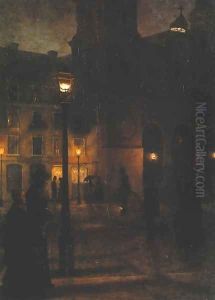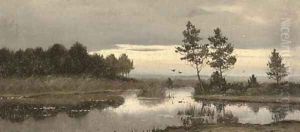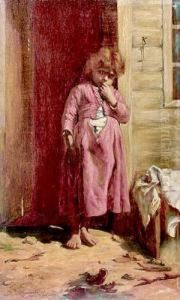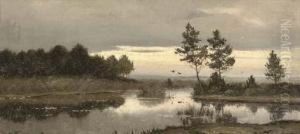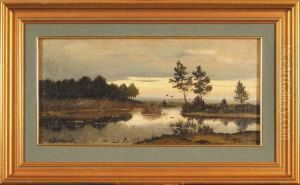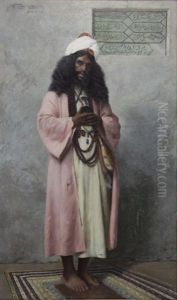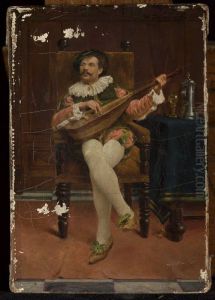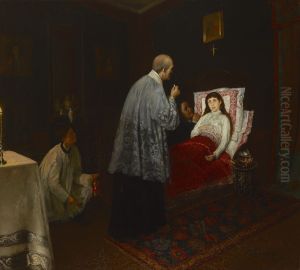Wincenty Trojanowski Paintings
Wincenty Trojanowski was a Polish painter, primarily known for his genre scenes and portraits, who lived during the 19th century. Born in 1828, in the Kingdom of Poland, which at that time was under the rule of the Russian Empire, Trojanowski was part of a period in Polish history that was marked by struggles for independence and cultural identity.
After showing a keen interest in art from a young age, Trojanowski likely received his early education in the arts within the Kingdom of Poland. However, detailed records of his early training are not widely available. What is known is that he became part of the vibrant Polish art scene which, during the 19th century, was characterized by a rise in national consciousness and a desire to preserve and promote Polish culture, especially in the face of political oppression and the absence of an independent Polish state.
Trojanowski's work was influenced by the broader European art movements of his time, including Romanticism and later Realism. His genre scenes often depicted the daily life and customs of Polish people, showcasing traditional costumes and rural settings. Through his portraits, he captured the likenesses and the character of his subjects, contributing to the preservation of Polish heritage.
Throughout his career, Wincenty Trojanowski would have participated in various artistic circles and exhibited his work in art salons and exhibitions. His contributions to Polish art were part of a larger movement among Polish artists and intellectuals of the time, who were engaged in the promotion of national values and the struggle for political autonomy.
Trojanowski passed away in 1895, leaving behind a body of work that provides a window into the world of 19th-century Poland. His paintings remain a testament to the rich cultural and historical tapestry of Poland, reflecting the spirit and resilience of its people during a time of national upheaval. Although he may not be as widely recognized internationally as some of his contemporaries, in Poland he is remembered as a significant figure in the country's art history.
